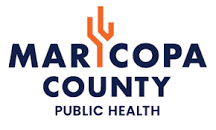A group of Medical Marijuana Dispensary operators have completed statutory language for a retail marijuana and marijuana law criminal justice reform voter initiative. I’ve been able to go through the Initiative language a couple of times now. The statutory language is 16 pages long- and there are a lot of provisions… but below are some of my initial impressions from a public health perspective:
Good Things
-
Employers would still be able to have drug-free workplace policies and can restrict marijuana use by staff.
-
Driving while impaired (to the slightest degree) by marijuana would still be illegal.
-
The governance structure is decent. It’s with an executive branch agency- ADHS (the 2016 Initiative created would have created a self-serving commission).
-
I mostly like the criminal justice reform parts for possession of less than an ounce. Possession up to 2.5 oz is a reduced penalty. Possession of more than 2.5 oz (with some exceptions for home cultivation) appear to be left where they are as a Class 6 felony. Currently, possession of very small amounts of marijuana (w/o a MM Card) are a class felony 6. Convictions impair people’s ability to earn a living – placing stress on families because of low wages and limiting the ability of folks to support kids and families and pay child support etc. – basically impairing self-sufficiency. AZ is one of a very very few states with possession of small amounts being a felony, this Initiative would fix that.
-
I like the conviction expungement provisions for the same reasons as above- and the expungement process is reasonable and not a free-for-all.
-
The labeling and packaging requirements are reasonable.
-
The testing requirements make sense too.
-
The restrictions on advertising are pretty good.
The Bad Things
-
There are no penalties for persons over 21 that give or buy marijuana for people under 21. This is a major shortcoming. There’s no disincentive for older people to buy for people under 21. There are small penalties and low-grade misdemeanors for people under 21 that misrepresent their age to people over 21 for the purpose of buying marijuana – but no penalty for the older person whatsoever.
-
The buy age in the Initiative is 21 years old. Data suggests that the buy age should be 25 years old. Brains continue to develop up to age 24 (25 in males). Data suggest that marijuana is more harmful and is more likely to cause longer term behavioral health problems when people start using before 25 y.o. Here’s a new Surgeon General Advisory from this week on the subject.
-
The Initiative would allow the ADHS to regulate potency but prohibits the agency from limiting doses to less than 10mg. 10mg is a good “ceiling” regulation but a bad “floor” regulation. Having said that- dispensaries would still be able to produce edibles that are less than 10mg and sell them – it’s just that the ADHS can’t regulate below 10mg.
-
The excise tax is a good idea – but the funds don’t go toward public health or youth marijuana prevention programs. There’s a one-time distribution ($10M) to the ADHS from the existing medical marijuana fund for public health stuff, but nothing after that. There should be some excise tax funds going to prevention campaigns- in particular youth prevention. A lot more of the excise tax should go toward preventing the downside of the policy decision- e.g. preventing kids from using marijuana.
-
Some excise funds should go to the AZ Biomedical Research Commission to study the effects of this policy intervention.
-
The law would let people cultivate up to 6 plants or 12 per household. While there are some requirements for locking the plants away from kids in houses- enforcing that will be next to impossible and diversion to kids would happen for sure with basically no checks in the system.
-
The existing medical-marijuana dispensaries would have a corner on the market in perpetuity. This is anti-competitive and permanent. Current medical marijuana dispensaries will be allowed to apply to the ADHS for a license to run a retail marijuana store in early 2021. It’s possible that there could be a few more stores that open eventually, but not many, because the total number is limited to about 130 total (10% of the number of pharmacies in AZ). Existing medical marijuana dispensaries, with a handful of exceptions, would essentially be the only stores that exist. ADHS would regulate the program.
-
The Initiative appears to tie the hands of local authorities in setting zoning restrictions (although the League of Cities and Towns would be a better expert).


